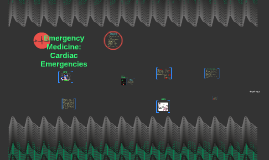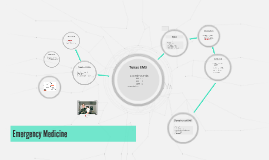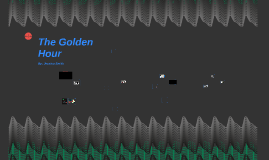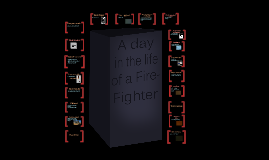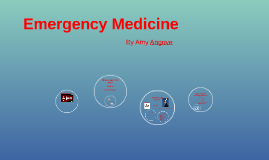Emergency Medicine
Transcript: - sends a shock to the heart that stops it - The benefits of an AED is that the computer makes all the decisions for you, and all someone has to do is follow the directions - an AED is applied when patients are pulseless, not breathing, and unresponsive How to Give CPR CPR Thank You! Acute Myocardial Infarction - Heart Attack - Total and sudden occlusion or blockage of blood blow through a coronary artery to the myocardium -Causes necrosis of the heart tissue - Usually occurs in the left ventricle developed over time by a clot forming - AED and possible CPR is essential Cardiac Emergencies STEPS IN AED USE - Cramping and pain just under the sternum - Radiating pain down the left arm - Indigestion feeling in the upper abdomen - Tightness under the jaw - Shortness of breath 1. BSI 2. Check to see if the scene is safe. If yes enter 3. Decide if it is a life threatening situation. If yes - Call 911 - Get an AED - Gain consent - Control life threatening situations Check CABDS (this is when CPR and AED is in use for cardiac emergencies) Circulation- is there a pulse Airway- is airway open breathing- are they breathing severe bleeding Control other major emergency situations Attempt to find mechanism of injury Take baseline vitals Get Sample history Continue to check vitals every 15 minutes until relieved Types of Cardiac Illness Congestive Heart Failure - Heart is functioning but the myocardium is damaged and can no longer pump adequately to meet the needs of the body - Increases heart rate and enlargement of the left ventricle - Causes a buildup of fluid in the lungs - Severe dyspnea, anxiety, sitting upright, etc. SIGNS OF A HEART ATTACK Steps in an Emergency AED Emergency Medicine: Cardiac Emergencies Cardiac Arrest- occurs when the heart for any reason is not pumping effectively or at all and no pulse can be felt - Brain cells begin to die within 4-6 minutes following Cardiac Arrest -You can increase the survival rate of a cardiac patient by 70% if an AED is applied within 4 minutes of the event - Heart disease is the #1 cause of death in the US - Go through the same steps as any patient, but with the mindset of getting to an AED and being prepared to perform CPR and calling 911 quickly Facts about Cardiac Illness in Emergencies What is an AED Angina Pectoris - Pain in the Chest - Inadequate oxygen supply to the heart usually caused by a blockage in the coronary artery - Pain is described as crushing or squeezing or tightness - Usually occurs during period of stress and can be relieved if the stress is removed - Usually lasts under 10 minutes 1. BSI, scene size- up, medical Direction, AED, CABDS 2. Perform initial assessment 3. Begin or resume CPR as AED is readied 4. ATTACH AED PADS and turn AED Power On 5. Stop CPR and say "Clear" 6. Begin Analysis 7. If AED calls for a shock, then hit the Shock button 8. Repeat for 3 stacked shocks 9. Check patients pulse 10. If no pulse, resume CPR for 1 minute and re- analyze (3x) 1. First Steps (BSI, Size up, Scene Safety) 2. Check to see if the patient is responsive, only perform CPR if the patient isn't breathing or has no pulse. 3. Begin CPR as soon as possible 4. First do 30 chest compressions by putting weak hand in the middle of the chest in between the nipples and the placing the stronger hang over the weak one and interlocking the hands. Straighten arms and lock elbows and compress the chest at least 2 inches since the patient is an adult 5. use the head tilt/ chin lift maneuver by okaying 1 hand on the forehead and 2-3 fingers of the other hand on the bony part of the jaw. lift chin up while tilting head back 6. give 2 rescue breaths by creating a seal around the mouth and pinching the nose 7. Continue 30 compressions and 2 berths for 5 cycles 8. if patent begins to move, maintain airway and place the patient in the recovery position but be prepared to start CPR again 9. Use AED once it arrives 62 ECG bpm








